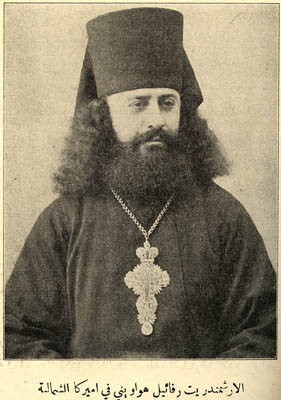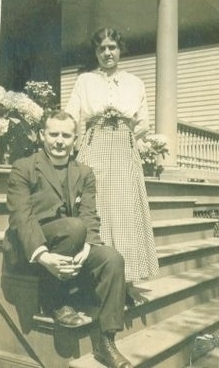Most Honored Sir — I want to know if it is a crime to wear a beard? I suppose that this may appear to be a foolish question to you, but to me it means a great deal. I am the pastor of St. Nicholas Greek Orthodox church on Pacific street, Brooklyn, and my profession calls for the wearing of a beard. When I got out on the street the boys and young men mistake me for a Jewish rabbi and insult and assault me.
They often throw decayed vegetables at me. If I were a rabbi, would that be an excuse for loafers to assault and insult me? I am a citizen and as such should be protected from assault.
I have borne the insults and assaults patiently up to last Saturday night, when an incident occured that made me lose all patience. I was alighting from a car at Seventy-third street and Thirteenth avenue, Brooklyn, when a little loafer hit me with a decayed vegetable, which I believe was a more than ripe tomato. This exhausted my patience. I went for the lad, who, luckily for him, escaped.
Hoping that you will do what you can for me and gain for me the protection I deserve, I am sir,
Very respectfully,
BASIL M. KERBAWY.
The mayor didn’t take long to reply. On April 12, 1911, he wrote to Kerbawy,
Reverend and Dear Sir: Your letter informing me that as you walk about the city visiting the homes of your parishioners people apply opprobrious names to you, and throw empty cans and rubbish at you, and otherwise assault you, on account of your beard, is at hand. You ask me, “Is it a crime in the City of New York to wear a beard”? No, it is not. I wear one myself and nobody ever takes any notice of it. How is it they take notice of your beard? Have you trimmed it in some particular way, contrary to the Scriptures? For you know the Scriptures say, “Ye shall not round the corners of your heads, neither shalt thou mar the corners of thy beard.”
Yes, if they assault you, and throw cans at you, you have a right to defend yourself to the last extremity; but if you find it necessary I will have a detective go around with you for a few days until we arrest some of those who are wronging you. Are you certain that it is your beard which is the cause of the trouble?
Kerbawy actually took the mayor up on his offer of a detective. From the New York World (via the Washington Post, 4/28/1911):
The clergyman will be a striking figure with his tall, shiny hat and ruddy face almost hidden by the luxuriance of his black beard. It is not of such a length, being very neat in its trimming, but it is so abundant that only mere patches of the priest’s red cheeks show above it. Softly behind Father Kerbawy will tread a sleuth ready to promptly pounce upon the first person long the way who shies sticks, stones, objurgation, tomato, or even a spitball at the worthy priest.
Kerbawy’s reply to the mayor? “It was very kind of the mayor to give such prompt attention to my case. I shall probably write to let him know that my whiskers are trimmed in full accordance with the Scriptures.”
(Alas, I don’t have a good picture of Kerbawy, so I can’t show you his beard, which one newspaper described as being of the “lace curtain” variety. I’ve said it before, but if newspapers today wrote like they did a century ago, they wouldn’t be a dying industry.)

St. Raphael upon his arrival to America in 1895
Of course, Kerbawy’s bishop was St. Raphael Hawaweeny, who, in 1895, had arrived in America with a bushy beard and a rather wild head of hair (see above).
St. Raphael Hawaweeny and Archdeacon (later Bishop) Emmanuel Abo-Hatab, 1913
But, as we saw on Monday, Raphael soon changed his appearance, cutting his hair, trimming his beard, and, outside of the church, trading his cassock for a suit and collar. In 1904, he told the New York Sun (5/22/1904), “I do not wish to attract attention by any peculiarities. There is no reason why I should be so extreme.” By the end of his life, St. Raphael looked like any other respectable gentleman a hundred years ago.

Fr. Joseph Stephanko with his wife Anna
In the early 20th century, beardless faces were much more common among Russian priests than among their Greek counterparts, who tended to have full beards until around the 1920s. But not all the Russians were thrilled with clean-shaven clergymen. Fr. Joseph Stephanko, pastor of Ss. Peter & Paul Church in Passaic, New Jersey, dared to pick up a razor in 1913. A Russian-language newspaper in Jersey City accused Stephanko of “making void the Orthodox faith because he shaved himself.” The priest responded by filing a $25,000 libel suit against the paper (New York Times, 8/20/1914). A couple of years later, he was awarded $1,000 — a fraction of his original demand, but still a healthy chunk of change in the 1910s.
3 Replies to “To shave or not to shave?”
Comments are closed.